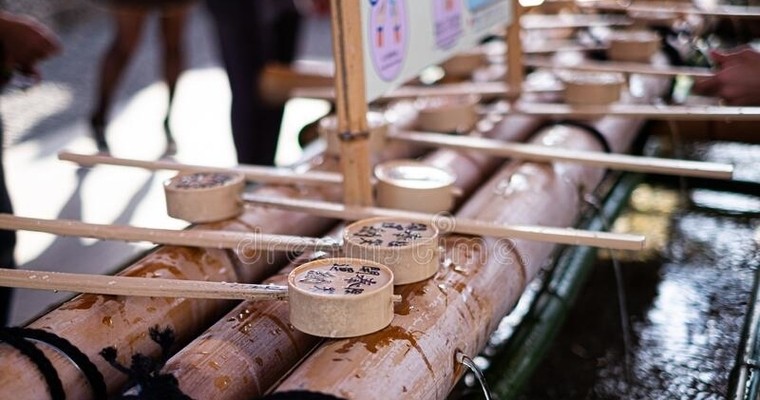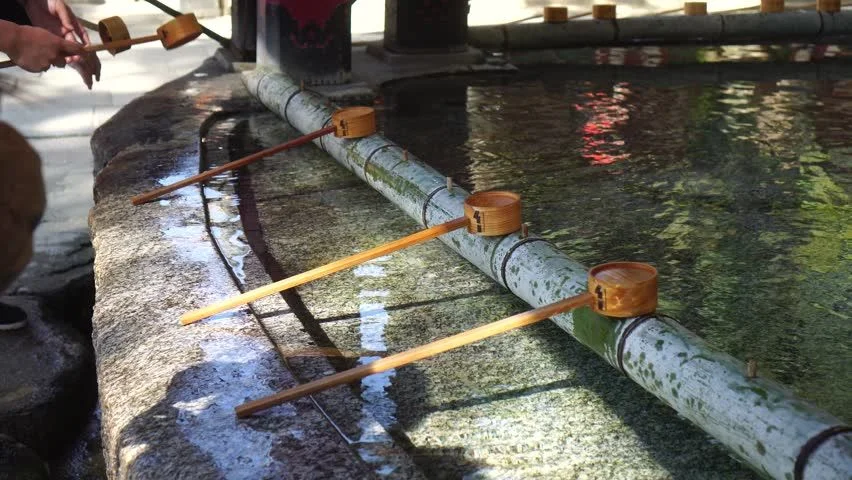Japanese culture is very influential worldwide and there are many people who adopt its lifestyle, beliefs, and even spiritual and customary rituals from the country, one that has been widely discussed on social media is the "Hishaku".
Today's text will address and develop better about this Japanese purification ritual, exploring its meaning and how it is performed, as well as explaining how this tradition survived with the pandemic and the equipment used in the celebration.

Table of Content
What is Hishaku?
The hishaku is a purification ritual originated from Shintoism, a native religion of Japan that emphasizes the importance of purity and spiritual cleanliness. Usually performed in shrines and temples scattered throughout Japan, the hishaku is an integral part of a broader ritual known as "Chozu." This ritual is an essential preparation, where participants purify their bodies and minds before entering the sacred space to make their prayers and offerings to the kami, the spirits or deities venerated in Shintoism.
The "hishaku," specifically, refers to both the act of purification and the tool used in this process—the wooden ladle. This object is traditionally made of bamboo or another type of wood considered pure and is used to pour water on certain parts of the body. This act symbolizes the cleansing of physical and spiritual impurities, preparing the faithful for a respectful and sacred encounter with the divine.
Procedure of the Hishaku Ritual
The hishaku ritual is meticulous and symbolic, with a specific sequence that must be followed to ensure its effectiveness:
- First, pour water on the left hand.
- Next, the right hand is purified.
- Water is put in the mouth for internal cleaning.
- Finally, water is poured over the handle of the ladle, symbolizing the purification of the instrument used in the ritual.
Spiritual and Emotional Benefits
Practitioners and followers of Shintoism report several positive sensations and spiritual benefits resulting from hishaku, including:
- Balance of emotions: Purification helps to stabilize feelings and emotions, promoting internal balance.
- Feeling of peace and tranquility. The ritual induces a state of calm and peace, warding off the stress and agitation of everyday life.
- Deeper connection with oneself: Provides a moment of introspection and self-awareness.
- Unique encounter between body and mind: Create a harmony between the physical and the spiritual, aligning thoughts and actions.

Origin of Hishaku
The hishaku, as an object and ritualistic practice, has its origins deeply intertwined with the traditions of Shintoism, the native religion of Japan that celebrates the sacredness of nature, ancestors, and kami (spirits or deities). Since ancient times, Shintoism has incorporated purification rituals (known as "Misogi" and "Harai") aimed at cleansing spiritual impurities, known as "kegare".
Historical and Cultural Context
The hishaku ritual developed as part of the Chozu, which is a simplified process of Misogi, adapted for daily practice in shrines. Traditionally, Misogi involved bathing in sacred rivers or waterfalls, but with urbanization and the evolution of religious practices, it became necessary to find more accessible forms of purification for shrine and temple visitors.
Evolution of Purification Instruments
The wooden dipper, or hishaku, was adopted as a practical tool for this purpose. Its use allows for the performance of symbolic cleansing gestures, pouring water over the hands and mouth, without the need to completely submerge in water. This adaptation was crucial for integrating the purification ritual into the daily routine of practitioners, making it easier to perform in public and private spaces.
Symbolic importance
The hishaku is more than just a functional utensil; it carries a deep symbolic meaning. Made traditionally of bamboo, a material considered pure in Shintoism, it symbolizes the connection with nature and the passage of purification. Bamboo, due to its strength and flexibility, is seen as an example of purity and moral resistance.
By incorporating the practice of hishaku in rituals and daily life, the Japanese maintain a vital connection with their spiritual and cultural traditions, reaffirming their respect and reverence for the kami and the natural environment.
Resilience and Adaptation During the Pandemic
The tradition of hishaku has shown remarkable resilience during the COVID-19 pandemic. The nature of the ritual, which emphasizes cleanliness and purification, has found new meaning in a world concerned with hygiene and health.
Sanctuaries and temples have adapted their practices to ensure the safety of participants, implementing measures such as social distancing and disinfection of hishakus, ensuring that the tradition continued to be a source of comfort and spiritual renewal, even in times of crisis.
Wrapping Up
The hishaku is not just a ritual; it is a gateway to a deeper understanding of Japanese culture and spirituality. It remains a vital practice in many people's lives, offering a connection to the past and a path to purification and inner peace.
In a rapidly changing world, rituals like hishaku remind us of the importance of maintaining harmony with our traditions and with ourselves.
